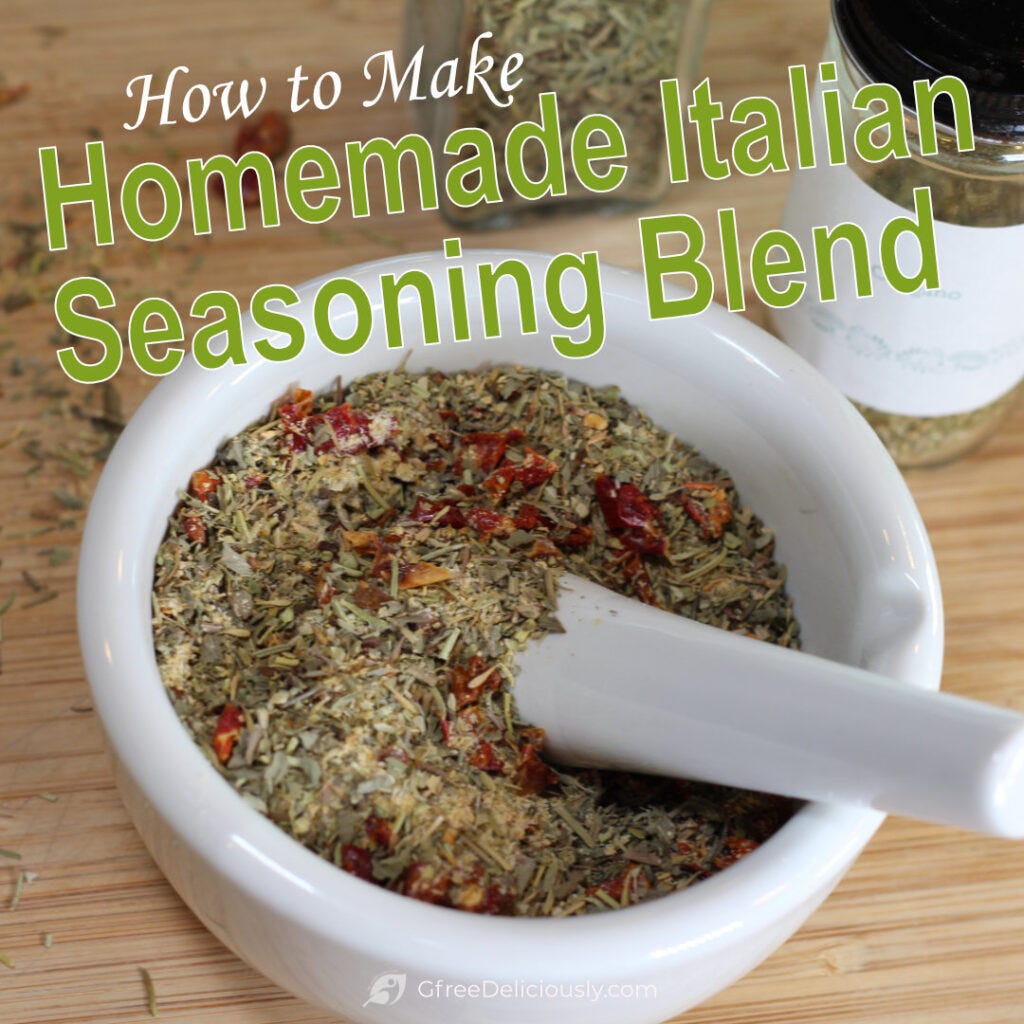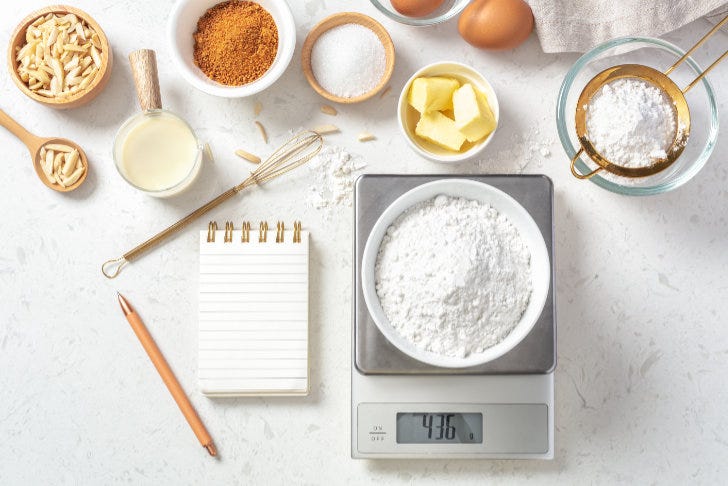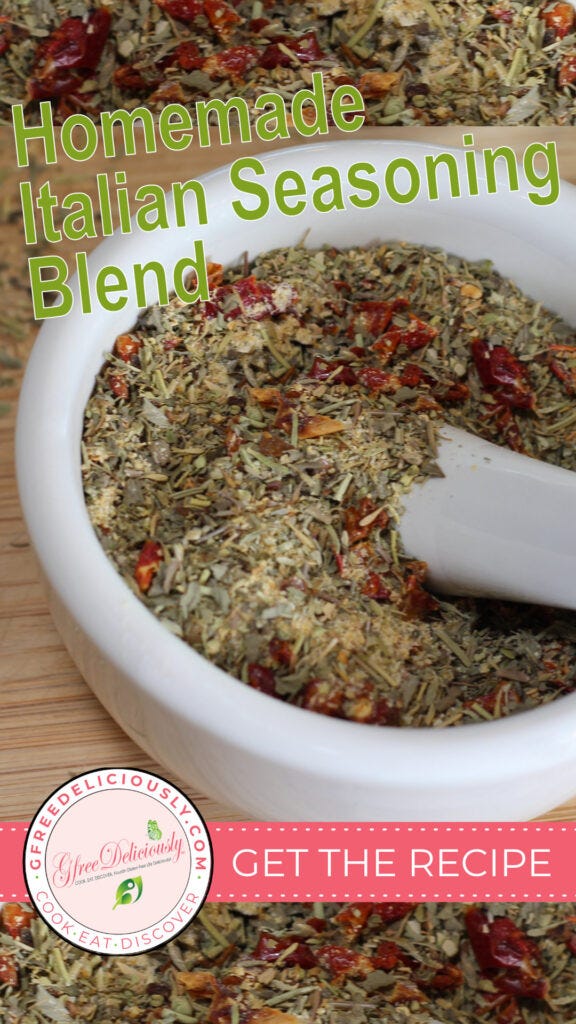Homemade Italian Seasoning Blend
A homemade Italian seasoning blend is a must-have for any home cook who loves to add bold and authentic flavors to their Italian dishes. Made with a mix of dried herbs, this aromatic seasoning blend adds depth and a flavorful sophistication to pasta sauce
What is Italian Seasoning?
The Magical Blend of Extraordinary Taste & Delicious Flavor... Italian cuisine is famous worldwide for its extraordinary taste and delicious flavors. Contributing to the signature taste of its food is a magical blend of aromatic and flavorful herbs and spices that provide a unique taste to any Italian dish. This blend is Italian seasoning.

[wprm-recipe-snippet id="67210"] Please note that the calories listed reflect the total yield amount for this recipe.
(Nutrition information is calculated using an ingredient database and should be considered an estimate.)
SEE FULL NUTRITIONAL FACTS While Italian seasoning can be easily bought at any grocery store, nothing beats the taste of a homemade version you can make yourself with dried herbs and spices commonly used in Italian cuisine. In this post, we’re sharing our favorite salt-free blend for Italian seasoning that you can use to add an authentic taste to your Italian dishes. Click here for a detailed, printable recipe card.
Elevate your Italian dishes with a homemade Italian seasoning blend! #homemadeseasoning #Italiancooking #yum" #fromscratch! Make this #GlutenFree #Healthy #Recipe #CookingGfreeDeliciously @GfreeDelicious CLICK TO TWEET
How to Make Homemade Italian Seasoning at Home
Most typical Italian seasoning blends combine dried basil, oregano, rosemary, thyme, garlic powder, and onion powder. From there, each Italian cook’s signature blend is slightly different and can even include dried vegetables. Our favorite blend includes dried red bell pepper which you can find already dried on Amazon, or you could dehydrate the peppers yourself at home. We like the addition of dried red bell pepper because when rehydrated in a dressing or other recipe, it provides a little extra sweetness. This is a versatile seasoning for which you’ll find many uses in various dishes, ranging from pasta sauces, pizzas, and marinades to salads, soups, and for seasoning roasted vegetables.
Ingredients
Three tablespoons each of:
▢ Basil, dried ▢ Oregano, dried ▢ Parsley, dried
Two tablespoons each of:
▢ Red Bell Pepper, dried ▢ Thyme, dried ▢ Rosemary, dried ▢ Garlic powder
One tablespoon:
▢ Onion powder
Lastly, one teaspoon of each:
▢ Black Pepper ▢ Red Pepper flakes (if using)
Instructions
Measure out all the ingredients so that they are ready to use. Add all the dried herbs and spices in a small mixing bowl, including dried basil, oregano, parsley, dried red bell pepper, thyme, rosemary, garlic powder, onion powder, black pepper, and red pepper flakes (if using). Mix all the ingredients well to ensure that they become evenly distributed. Store the homemade Italian seasoning blend in an airtight glass jar or a BPA-Free plastic container with a tightly sealed lid. Label it with the name of the seasoning, the date you made it, and any additional notes you may find helpful. Place in a cool and dry place for future use.
Tips for making homemade Italian seasoning:
Experiment with different ratios of herbs to find a blend that suits your taste preferences.
Use the freshest dried herbs whenever possible.
Remember that fresh-cut, dried herbs will tend to have a more vibrant flavor than dried herbs that have sat in your cupboard for a long time.
Store the seasoning in a cool, dark place away from direct sunlight and moisture. This will ensure that the spices remain fresh and potent for a lengthier period.
If desired, add red pepper flakes to the seasoning for a bit of heat. Of course, this is optional and can be omitted if you don't like spicy food.
Some recipes call for salt in their homemade Italian seasoning. However, we feel it's best to leave out the salt and season your dish accordingly to whatever you're making.
How to use homemade Italian seasoning:
You can use homemade Italian seasoning in any of your favorite Italian dishes, and it’s also great for enhancing the flavor of nearly any dish. Here are a few more popular ideas where you can add this seasoning to add incredible taste:
Pasta dishes: Sprinkle Italian seasoning over your favorite pasta dishes like spaghetti, fettuccine, or lasagna to add an authentic flavor.
Marinades: Italian seasoning can be used as a starter for marinades. Combine it with olive oil and lemon juice to make a quick marinade for chicken and pork.
Pizza: Add Italian seasoning as a topping to your homemade pizza to have the taste of a professional pizzeria. When making pizza dough from scratch, we also love adding a tablespoon when mixing it up!
Roasted Vegetables: Drizzle olive oil and a generous sprinkle of Italian seasoning on an even layer of potatoes or root vegetables arranged on a baking sheet. Lightly toss to coat, then bake at 350°F for 25-30 minutes for an easy, flavorful, roasted vegetable side dish everyone will love!
Salad Dressing: Whip up an easy salad dressing in minutes using Italian seasoning with a handful of simple ingredients to dress your favorite salads or to make a dip for vegetables and chips.
Soup and Stews: Stir Italian seasoning into soups, stews, and casseroles to enhance flavor.
Become a Subscriber or Login now ►
Prefer making from Scratch? Then, try these popular recipes too!
How to Make Creamy Italian Dressing at Home Gluten-Free Seasoned Salt Homestyle Buttermilk Ranch Dressing & Dip Mix Lemon Poppyseed Salad Dressing
Before we go…
We hope this recipe for our homemade Italian seasoning is an excellent addition to your spice rack as a simple and easy way to add a unique taste to your favorite Italian dishes. When you make it at home, you will ensure it's fresh, fragrant, and suits your taste preferences. Try it tonight to discover the difference. Keep scrolling for the recipe card below to print or save the recipe. Give it a try – we're sure you won't be disappointed! Thanks for stopping by. Have a happy time cooking! XXO Kymberley P.S. When you try this recipe, let us know how you like it! Leave a comment below, share it, and rate it – it’s super helpful for other readers and us. Just click the blue-green comment bubble on the bottom left of your screen to jump to the comment area below.
Enjoy the Recipe!

NO Need to Look for Your Calculator:
Adjusting the serving size of recipes is easier than you may think.
To change the number of portions that a recipe makes go to the “Servings” quantity in the recipe section below. Hover over the servings amount and a slider box will appear above the amount. Slide the toggle to adjust the desired number of portions you want to make. Please note that when adjusting the serving amount the ingredient measures will change to decimal equivalents. Need help with cooking and recipe conversions? Head over to Good Cooking’s Recipe Conversions Guide for their online collection of helpful links! Learn how to adjust the serving size, CLICK HERE. [wprm-recipe id="xxxxx"]
Homemade Italian Seasoning Blend

Made with a mix of dried herbs, this aromatic seasoning blend adds depth and a flavorful sophistication to pasta sauces, salads, meats, and more. The seasoning is easy to make at home; you’ll love the savory, earthy, and subtle sweetness it adds to your meals. Store it in an airtight container, and you'll have an Italian spice blend ready to use whenever you want to bring a touch of Italy to your kitchen.
small bowl
Utensils (Whisk, Measuring Cups & Spoons, Large Spoon)
3 tablespoons Basil, (dried)
3 tablespoons Oregano (dried)
3 tablespoons Parsley (dried)
2 tablespoons Red Bell Pepper (dried)
2 tablespoons Thyme (dried)
2 tablespoons Rosemary (dried)
2 tablespoons Garlic powder
1 tablespoon Onion powder
1 teaspoon Black Pepper
1 teaspoon Red Pepper flakes (*optional)
Measure out all the ingredients so that they are ready to use.
Combine all the dried herbs and spices in a small mixing bowl, including dried basil, oregano, parsley, dried red bell pepper, thyme, rosemary, garlic powder, onion powder, black pepper, and red pepper flakes (if using).
Mix all the ingredients well to ensure that they become evenly distributed.
Store the homemade Italian seasoning blend in an airtight glass jar or a BPA-Free plastic container with a tightly sealed lid. Label it with the name of the seasoning, the date you made it, and any additional notes you may find helpful. Place in a cool and dry place for future use.

Tips for making homemade Italian seasoning:
Experiment with different ratios of herbs to find a blend that suits your taste preferences.
Use the freshest dried herbs whenever possible. Remember that fresh-cut, dried herbs will tend to have a more vibrant flavor than dried herbs that have sat in your cupboard for a long time.
Store the seasoning in a cool, dark place away from direct sunlight and moisture. This will ensure that the spices remain fresh and potent for a lengthier period.
If desired, add red pepper flakes to the seasoning for a bit of heat. Of course, this is optional and can be omitted if you don't like spicy food.
Some recipes call for salt in their homemade Italian seasoning. However, we feel it's best to leave out the salt and season your dish accordingly to whatever you're making.
Accompaniment, Ingredient, Seasoning, Topping
Italian, Mediterranean
Gluten Free, Low Fat, Low Salt, Vegan, Vegetarian
basil, garlic, Italian, onion, oregano, parsley, quick and easy, rosemary, seasoning, Seasonings & Flavorings, spice, spice blend, thyme





